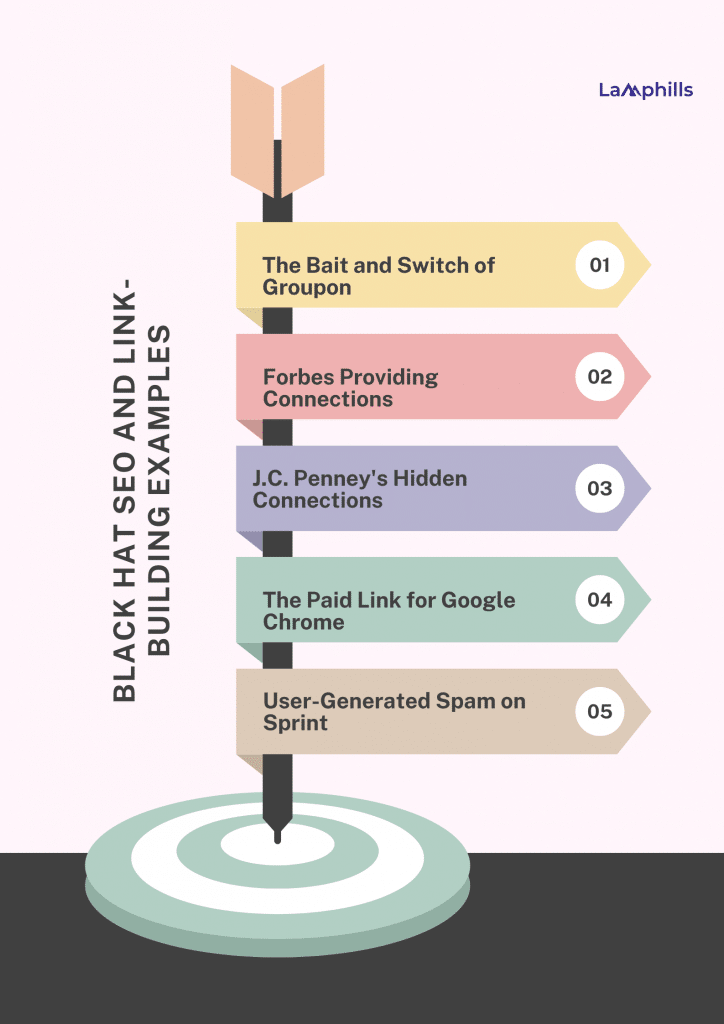I have worked as a PR person for years, and I can’t emphasize enough how important SEO and link building are—especially for your websites. However, far too many companies and authors disregard this beneficial approach.
Consider companies that experienced significant PR meltdowns. Better SEO and link building would have allowed them to identify problems sooner and modify their messaging.
Link building is an essential component of search engine optimization (SEO) since search engines consider the quantity and quality of links going to a website when considering where to rank it. In 2024, link-building tactics have changed, emphasizing content creation, relevancy, and quality. The significance of link-building for SEO and the development of link-building tactics in 2024 will be covered in this article. Understanding Link Building Techniques: An All-Inclusive Guide for 2024.
Key Points
- Search engines like Google may penalize you severely for using black hat link building, including drastic decreases in your site’s ranks or total de-indexation.
- Using link farms, purchased links, hidden links, cloaking, and comment spamming are examples of common black hat link development strategies.
- Ahrefs, Moz, SEMrush, Google Search Console, and other specialist tools and software are necessary to detect black hat link creation effectively.
- Finding and removing malicious links is a necessary step in recovery if black hat link building has damaged your website. The Google Disavow Tool can tell Google about low-quality links leading to your website that you would like to be ignored.
- Sustainable success requires emphasizing white-hat SEO tactics, such as producing high-quality content, obtaining backlinks organically, and maintaining a user-focused mindset.
What Is Black Hat Link Building
Black hat link building involves using techniques beyond search engine guidelines to raise a website’s position in search results. These dishonest methods rarely result in a search engine penalty and don’t help the searcher. Cloaking, employing private link networks, and stuffing keywords are examples of black hat methods.
While visibility in search results is essential for business expansion, search engine optimization can be done incorrectly. Black hat SEO and link building is a dark art that is done incorrectly. Rather than providing solutions for users, black hat SEO aims to manipulate search engine algorithms. Black hat SEO employs dubious methods to get you to rank highly on search engine results pages rather than earning that right. So, my advice to any website using black hat SEO tactics consistently is more likely to hurt than help your website’s search engine ranking.
Techniques Used in Black Hat SEO and Link Building
Because search engine algorithms are always getting more intelligent, avoiding black hat tactics is critical. With the aid of this article, you may build your business ethically and steer clear of unethical black hat techniques.
You can avoid using black hat SEO tactics in your SEO plan by being aware of the many types of these strategies. The following methods are employed by black hat marketers:
#1. Stuffing Keywords
“Keyword stuffing” is adding irrelevant terms into your material to manipulate search engine rankings.
Articles become less understandable and provide little value to users when the exact keywords are added in several permutations. Additionally, you might rank for unrelated inquiries. It is simple to identify keyword stuffing, and Google may mark the material as artificial.
#2. Link Farm
A website or group explicitly created for link building is known as a link farm. Every website has links to one or more other websites that the developer hopes will appear higher in search results. In addition to other considerations, search engines use the number of links referring to a website to decide to rank. Using this, link farming inflates the number of backlinks pointing to a specific website.
Link farms frequently create densely linked-to, low-quality content. Usually, the anchor text of these links contains the keyword that the linker hopes to rank for. Fortunately, search engines typically detect link farms, making it more challenging for those using black hat SEO techniques.
#3. Structured Data
Structured data, sometimes called rich snippets or schema, allows you to modify how your material appears in search results. On a website I was working on, I added structured data to pages showcasing a book, recipe, or other goods and services. This helped differentiate my website from the competition and add more space on the result pages.
Structured data are abused by those who engage in black hat SEO and link building to deceive search engines and users. This might involve inserting false information or posting a fictitious five-star customer review on a website. Google encourages people to report websites that abuse Structured data, so this is a risky practice.
Brands should continue to employ structured data to present accurate, helpful information, even in the wake of Google’s crackdown on data structure misuse.
Checklist on How to Discover Black Hat Link Building in Your Websites.pdf
#4. Poor-Quality Information
One of the most prevalent black hat practices is producing information that is of no use to the search engine. This includes utilizing content that a person or bot has scraped from another website. Google’s recognition of plagiarism and duplicate material has improved with the latest Panda update.
Using unseen keywords is further unethical behavior. Some websites achieve this by having the text match the page’s background color. This implies that even while the page is hidden from the user, it can still rank for those keywords. It won’t be necessary to “hide” terms on your website if your main goal is to assist users in solving difficulties.
#5. Exclusive Blog Networks
A private blog network comprises multiple reputable websites that are solely utilized to exchange links. These networks inflate the number of backlinks on a website, much like link farms do. All P.B.N. sites have links pointing to other sites they wish to rank higher in search results. They are not connected, though.
Shady SEO practitioners typically purchase expired domains with a track record of authority. They then provide content identical to what was posted on the domain before it expired. The black hat marketer then increases the links pointing to his or her website, pushing up the home page in search results.
#6. Cloaking
“Cloaking” displays one piece of material to people and a different one to search engines. This strategy is employed by those who utilize black hat SEO tactics to manipulate content’s search engine rankings for several irrelevant keywords. Cloaking is a common tactic spam websites use to evade penalties for the spam content they provide visitors.
Because of this, I had to employ a common practice: I restructured my page to make it more mobile-friendly. This is one way to customize content for different users. This is acceptable as long as the content remains unchanged for search engine crawlers. Consider whether your content will help the user solve a problem. It is sufficient if it does. Search engine bots should be handled similarly to any other user.
#7. Use a Bait-and-Switch
Another black hat technique that tricks search engines is bait and switch. This entails producing content on a subject you want to rank for. Once the page ranks, you replace the content with something different. The visitor has a bad user experience because they hoped for something else. It is not a good idea to do SEO by “tricking” users and search engines with this black hat method.
#8. Acquired Links
According to Google’s Webmaster Guidelines, buying and selling links is prohibited. In fact, according to Google, any connection used to skew Google’s PageRank is deemed a part of a link scheme. One example is sending complimentary goods or other rewards to a different company in return for links.
I advise you to refrain from paying any other website to link to yours. Additionally, Google requests that all users report any instances in which links are purchased or sold. Once the practice is verified, the search engine will penalize both. You should immediately remove any links you bought without realizing they were part of a black hat strategy. If the webmasters refuse to delete the problematic links, you can also use a disavow links tool.
#9. Untrustworthy Redirects
Sending a person to a different URL than the one they initially clicked is known as a redirect. When black hat SEO is practiced, redirects are not used properly. This might involve sending other users to a different page and Google’s crawler to another, much like cloaking.
Redirects should only be used for their intended purpose to avoid black hat techniques. Use a redirect when combining two pieces of information or modifying your website’s domain name.
#10. Comments on Spammy Blogs
A common black hat technique is to put website links in blog comments. Although Google’s algorithm changes have made this method less common, some brands continue to do it. Today, most blogs set their comment links to be unfollowable by default, meaning that Google will not recognize them.
Ensure the comments section of any online community or newspaper you run is clear of spam. Search results for pages with spammy comments will be automatically filtered out. Anti-spam tools, such as Google’s free reCAPTCHA tool, can assist you in removing the possibility of seeing spam content.
Why and How Link Building Helps with SEO
You might not be persuaded that link-building is worthwhile after all this work. However, there is much more to link building than just raising your search engine ranks.
Check out a few ways that link building can help your brand.
#1. Visibility of Brand and Content
If you post your work on external platforms, it will reach a bigger audience and be read by a more diverse group of people. Additionally, more internet users will come across your brand.
#2. Credibility Through Association
Working with relatively low-level, specialist sources in the early phases of your SEO campaign will eventually lead to placements on high-authority, notable publishers. I refer to well-known household brands such as Forbes Post. These partnerships can help you increase the recognition of your own company.
#3. Referral Traffic:
One of the main advantages of resource page backlinks is the creation of referral traffic—readers who click on your links and visit your website. Since your website is where actual conversions happen, the more visitors you have, the more money you will make directly from your website.
#4. Continuous Visitor Volume and ROI
The ability of link building to produce continuous SEO ROI is another significant benefit. Links that you create are nearly always permanent. The longer you continue the technique, the more compounding returns your link graph will be able to generate and the higher your return on investment (ROI). This implies that initially, you won’t see as much of a return, but with continued effort over several months, you will see even better returns.
#5. Optimizing for Search Engines (SEO)
The first purpose of link building as a tactic was to raise your search engine rankings and visibility. Greater search engine traffic and more conversion opportunities directly correlate with higher ranks.
Black Hat SEO and Link-Building Examples
So, in my research on black hat SEO and link building, I came up with some substantial examples that are well-explained and detailed.

Let’s dive into this:
#1. The Bait and Switch of Groupon
S.F. Comprehensive Tours accused Groupon of being a bait-and-switch company. The tour provider and Groupon staged a one-time promotion, but the voucher website kept promoting the deal on Google even after it had ended. The content had been replaced, so when searchers clicked on Groupon’s page, no discount was to be found. Although this bait-and-switch occurred in a P.P.C. ad, it also frequently occurs in organic search results.
#2. Forbes Providing Connections
On the Google Webmaster Central forum, a user posing as Forbes asked for assistance responding to a link violation notice. Forbes was requested to delete the notice’s artificial connections from the text of their website.
In the chat, Matt Cutts from Google stated that he had repeatedly verified that the links he had bought had passed PageRank. Cutts suggested that Forbes get the penalty lifted by removing the sponsored links that pass PageRank. According to TechCrunch, following the punishment, Forbes started to take down the sponsored links back in 2011.
#3. J.C. Penney’s Hidden Connections
For a wide range of terms, including “home decor” and “skinny jeans,” J.C. Penney was the top result. The timing of the retailer’s remarkable search engine optimization accomplishment was ideal for the holiday season. The exceptional ranking in search results was attained through black hat SEO link-building strategies that were invisible to Google.
Doug Pierce found just over 2,000 backlinks. The anchor text on these links included the keywords that J.C. Penney wished to appear in search results. A large number of the connections were located on unrelated websites to J.C. Penney. These websites covered everything from autos to casinos. In an interview, J.C. Penney denied any liability for the links discovered.
In my research, Google disclosed that J.C. Penney had previously broken webmaster guidelines three times and confirmed that the company’s actions were against their policies. Following a Google penalty, J.C. Penney’s rankings for terms like “living room furniture” dropped to around seventy.
#4. The Paid Link for Google Chrome
Every now and then, Google makes mistakes with its SEO. They once put a follow link in a sponsored Google Chrome post. Given that the link was a component of sponsored content that the business paid for, this is considered black hat SEO. www.google.com/chrome received a penalty from the Google webspam team, which resulted in a sixty-day drop in Pagerank. They lost ground in the search results for the term “browser” due to the black mark against Google Chrome.
#5. User-Generated Spam on Sprint
On Google’s Webmaster Central forum in 2013, a member named Redleg x3 explained that Sprint had received a notification from Google alerting them about user-generated spam on their website. Matt Cutts from Google remarked on the discussion, observing that most of the spam has been taken down from the website. “Try to catch the spam a little faster or see if there are some ways to make it a bit harder for the spammers to post a large number of messages on the community pages,” he clarified, was the company’s recommendation.
Is Link building a black hat?
Search engine guidelines define “black-hat link building” as obtaining backlinks to a website through dishonest and unethical techniques. This can involve establishing secret blogging networks, contacting websites and requesting to purchase link insertions, or taking part in link exchange programs.
Is black hat SEO illegal?
While black hat SEO is not against the law, it goes against search engine policies and can get you in trouble. Black hat SEO involves using unethical methods to raise a website’s search engine position. These strategies include low-quality material, keyword stuffing, text hiding, building spammy backlinks, and purchasing links.
Does black hat SEO work?
While Black Hat SEO can occasionally result in rapid, temporary gains in rankings, search engines frequently penalize the site if manipulative techniques are detected.
Why avoid black hat SEO techniques?
- Search rankings: Black hat SEO may result in your website losing exposure and search ranks, which may lower traffic and sales.
- User experience: Bad user experiences might arise from using black hat SEO.
- Unsustainable outcomes: Using black hat SEO tactics frequently doesn’t yield long-term benefits.
Is buying links black hat SEO?
Purchasing links is considered black hat SEO and can result in penalties, as it goes against search engine guidelines. Although Google expressly forbids buying and selling links to improve results, there are reports that the search engine’s algorithm is becoming more adept at spotting purchased links.
Conclusion
Backlink management is one of the most crucial off-page SEO strategies for raising website ranks and domain authority. One high-quality backlink can be worth several times more than multiple low- to medium-quality backlinks combined. Never forget to abide by search engine rules, and never try to go ahead by deceit!
Related Articles
- Link Building Outreach: Beginners Guide (+Templates)
- How You Can Secure High-Quality Relevant Links to Improve Your SEO Rankings
- Free PR Tools: Top 10 Free PR Gems That Put Paid Tools to Shame
- BRAND PERSONALITY: How To Give Your Brand a Memorable Personality That Connects
- What is Risk Intelligence: Meaning, Tools & 2024 Best Practices





